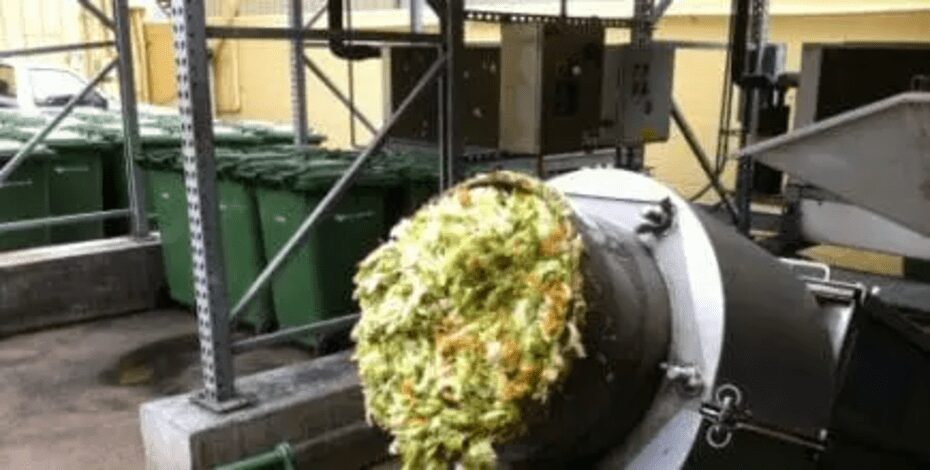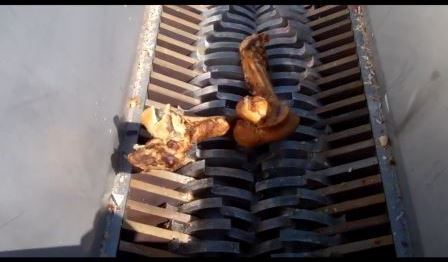
Choosing Between Single- & Dual-Shafted Industrial Grinders
Single VS. Dual Shafted Grinders
When you’re upgrading inefficient sewage and waste processing equipment, finding the right solution can be challenging, as there are many available in today’s market.
In an earlier blog, we discussed some of the primary types of industrial shredders and grinders commonly used in waste processing. In this blog, we’ll specifically compare single- and dual-shafted shredders and grinders and provide some guidance in choosing the best one for your operation.
Single-Shafted
As we covered in our previous blog, a single-shafted grinder has one solid rotating shaft with blades or cutters that shear and shred materials.
They’re highly efficient at reducing solid waste and have a simple design with fewer moving parts than dual-shafted grinders, making maintenance and repairs straightforward.
They’re commonly used to reduce pre-consumer food waste generated during food preparation and processing, shred plastic waste, reduce wood waste, and manage some mixed waste streams. However, they’re not as effective with extremely tough or fibrous materials, leading to increased wear and tear on blades.
They can also be more prone to jams or blockages, especially when dealing with large, bulky waste items. They may also have lower torque compared to dual-shafted grinders, making them less effective for heavy-duty applications.
Dual-Shafted
Dual-shafted grinders have two rotating shafts with blades or cutters attached to them, which helps them process larger volumes of materials. Many dual-shafted models are low-speed and high-torque, so they’re ideal for most industries that produce large amounts of waste daily, such as petroleum, wastewater, agriculture, food processing, manufacturing, ship food waste, e-waste destruction, and more. Their high torque capabilities allow them to handle tough and bulky materials easily.
The downside is that these grinders tend to be larger and heavier, requiring more space for installation and operation, and some models may not even be suitable for facilities with limited space.
Factors to Consider When Choosing
There isn’t an inherently good or bad option—it all comes down to your application.
Not everyone needs a grinder capable of shredding rags, rocks, wood, clothing, and other challenging solids. Sometimes, a single-shafted grinder is enough to achieve the desired outcomes.
If you’re not sure which type you need, consider these factors:
Material
What types of waste are you processing? Different types of waste materials have unique characteristics that determine how they should be processed, and different grinders have different capabilities. When choosing your grinder, ensure the model can handle the type of material(s) you plan to process.
Additionally, as mentioned earlier, single-shafted grinders aren’t as good at processing larger, bulkier items, while dual-shafted models can due to their high torque capabilities.
Processing & Output
How do you want those waste materials processed? What do you want the result to be after the waste is put through the grinder?
Determine your desired particle size and consider selecting a grinder with adjustable settings or one with a conveyor system, which returns particles that are too large to pass through the shredder’s screen for regrinding. Both options can help you achieve the desired particle size. Neither shredder type is better at controlling output size, it really just depends on the model you purchase and its features.
Additionally, will the waste be particularly wet (food waste, etc.) or odorous? If so, will you need it dewatered and compacted? Some grinders come with integrated compactors, which can help you save space and money.
Capacity
Although output size is important, capacity is just as critical. Consider how much waste you need to process daily.
Single-shafted grinders are generally suitable for lower to medium volumes of waste, whereas dual-shafted grinders are better equipped to handle larger volumes without extensive pre-processing and offer higher throughput rates.
You should also consider scenarios in which the grinder might need to operate at peak capacity during high waste production periods. Can the model handle higher peak loads?
Feeding
Is someone going to manually feed the waste into the grinder? Will the grinder be attached to an internal pipe and automatically fed waste? It is important to understand where the grinder is needed and whether you will have someone managing/monitoring it.
Due to their size, single-shafted grinders are often suitable for manual feeding and are generally ideal for smaller operations where the material needs pre-sorting or pre-handling to ensure consistent size reduction. Comparatively, dual-shafted grinders are better suited for automated feeding systems due to their ability to process large volumes of materials quickly.
Get Help Choosing the Right Solution
Do you still have questions? Get help from JWC Environmental.
Founded in 1973, we’re a municipal and industrial waste processing equipment manufacturer specializing in dual-shafted grinders and shredders. Our industrial series includes the Monster HYDRO series for sewage applications (In-line and Open-channel models are available) and our SHRED series for industrial waste processing.
We also provide our customers with factory repairs, upgrades, replacement parts, and field rebuilds to ensure consistent operational efficiency.
Please contact one of our product specialists today to find your solution.


